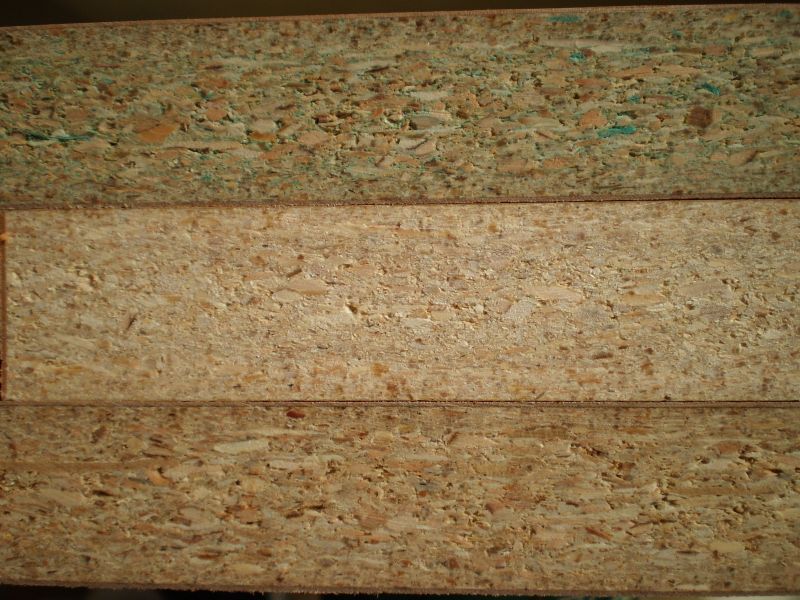Question
What are the relative benefits/disadvantages of particleboard vs. MDF? Here is what I think I know. Particleboard is a little cheaper, lighter, and swells less if wet. MDF is flatter, cuts easier on the saw, holds edgebanding better, holds dowels tighter. They seem to have nearly the same strength and span tolerance.
My greatest concerns are moisture resistance and cut quality. When I use MDF or particleboard, it is almost always melamine fused. Sometimes I use HPL and will glue it to either particleboard or MDF with one side melamine. I also always use moisture resistant melamine for the doors and kitchen/bath cases.
I use particleboard because when it gets wet it does not swell as bad as MDF. But I have not really used the moisture resistant varieties of MDF, so I do not know if their performance is better than moisture resistant particleboard. I see a lot of other shops using MDF core melamine for doors and cases, but I wonder why? Am I missing some other advantages of MDF?
Forum Responses
(Cabinetmaking Forum)
From contributor R:
I'm not an MDF hater... but in my opinion, the only time MDF should be used instead of particleboard is when it is to be finished. If it is going to have melamine, laminate, veneer, anything, particleboard always wins in my shop. It is stronger, lighter, 500% more resistant to water (standard MDF - I have livestock buildings sided and roofed with particleboard core melamine with nothing else covering them that have been exposed 3 years and have outlasted similar CDX buildings), easier to work with, etc. The only time I ever use MDF is for paint grade work when it's to be finished. MDF splits too easily for me, so I try to limit it in case work when I can (use banded particleboard or ply for paint grade on big cases). But I must say I've made hundreds and hundreds of 5 piece MDF doors this last year and I wouldn't make them out of anything else.
How would you describe good quality particleboard? Is the core loose with tiny voids? Does it have small filler particles mixed with the larger chips to fill in the voids of the core? Are there any tests or rules of thumb? I usually split a sample piece in half with a chisel to expose the core, but I do not know what I am looking for.
I am processing about 80 sheets a week and I still know little about the stuff. There is only one supplier in my market and they are importing the particleboard core panels from Malaysia. I am looking to import panels from one of the big companies (Panolam, or Flakeboard?). I assume they will have better panels.
Banding seems to work fine on either MDF or particleboard. But the lightweight stuff doesn't hold the banding as well. MDF seems inclined to split on the edges no matter what fastener is used. Doweling seems to work okay on MDF, but better on particleboard.
It's true that MDF has much poorer edge burst strength, but that isn't a big factor in many uses. I would much prefer to make shelves out of MDF since they will make a much longer span without bowing from weight, or will simply stay straighter than particleboard in shorter lengths.
If they ever make melamine board with MDF Ultralight board, that will be a fantastic product. It would be nearly the weight and strength of plywood with a great finished surface.
In any event, there's very little real world difference. Both particleboard and MDF are lousy for supporting any kind of load over an extended period of time. My experience is that MDF is actually more prone to sagging over time.
I've been very happy with Panolam. At least with a single blade, a good pine core wins hands down - significantly less chipping. The middle is Panolam, the others veneered.

The only moisture resistant stock around here that I know of is plain MDF. I usually band whatever edges I can. In moisture situations I Roo Glue the joints and use Titebond II to seal miscellaneous raw edges.